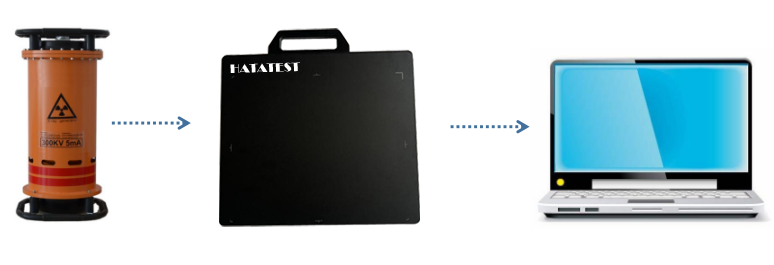
There are two main performance indicators for evaluating the imaging quality of flat panel detectors: quantum detection efficiency and spatial resolution. DQE determines the resolution of flat panel detectors for differences in tissue density; spatial resolution determines the resolution of tissue microstructure. Investigating DQE and spatial resolution can evaluate the imaging capabilities of flat panel detectors.
Factors affecting the flat panel detector DQE
In amorphous silicon flat panel detectors, there are two main factors that affect DQE: the coating of the scintillator and the transistor that converts visible light into an electrical signal.
First, the materials and processes of the scintillator coating affect the ability of X-rays to convert into visible light, thus affecting DQE. There are two common scintillator coating materials at present: cesium iodide and bismuth oxysulfide. The ability of cesium iodide to convert X-rays into visible light is stronger than that of sulfur oxidization but at a higher cost; processing yttrium iodide into a columnar structure can further improve the ability to capture X-rays and reduce scattered light. The detectors coated with sulphur oxide sulphide have fast imaging speed, stable performance and low cost, but the conversion efficiency is not as high as that of yttrium iodide coating.
Second, the way in which the visible light generated by the scintillator is converted into an electrical signal also affects DQE. In a flat panel detector of yttrium iodide (or yttrium oxysulfide) + thin film transistor (TFT), since the array of TFTs can be made as large as the area of the scintillator coating, visible light does not need to be refracted by the lens. Can be projected onto the TFT, there is no photon loss in the middle, so DQE is also relatively high; in the flat panel detector of cesium iodide + CCD (or CMOS) structure, the area of CCD (or CMOS) cannot be achieved and flicker The body coating is as large, so it needs to be refracted and reflected by the optical system to project all the images onto the CCD (or CMOS). This process causes photons to be lost, so the DQE is relatively low.
In an amorphous selenium flat panel detector, the conversion of X-rays into electrical signals is completely dependent on the electron-hole pairs generated by the amorphous selenium layer. The level of DQE depends on the ability of the amorphous selenium layer to generate charge. In general, the limit DQE of the indirect conversion flat panel detector of the CsI+TFT structure is higher than the limit DQE of the a-Se direct conversion flat panel detector.
-
 Sales@hata-ndt.com
Sales@hata-ndt.com -
 +86 371 63217179
+86 371 63217179










